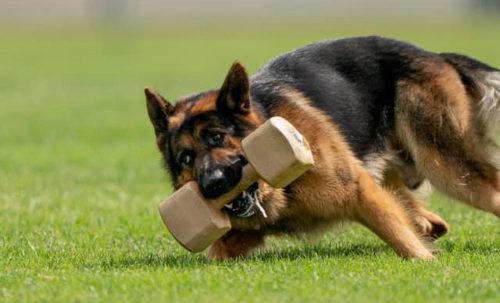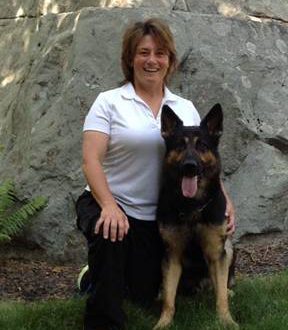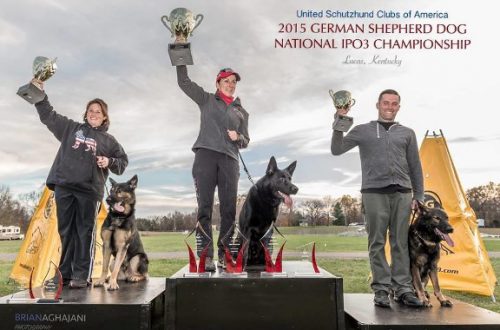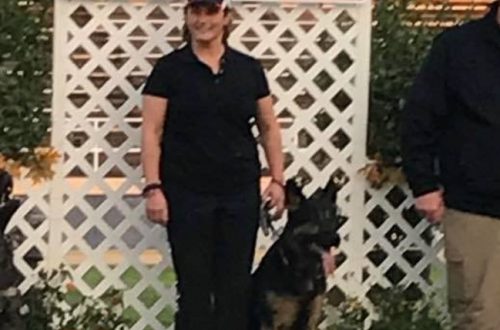-
Teaching the IGP Positions: Sit, Stand, Down
In this webinar Beth will demonstrate how she teaches her dogs the Sit, Stand and Down. Also included: Teaching the Tuck Sit vs. the Rock Back Sit Sit and Stay Teaching the Down from a standing position for quicker downs Down and Stay Teaching your dog to do a kick back Stand vs. a walking Stand Stand and Stay The private link will be sent to you once payment is received. Please specify the name of the video in the description of payment.Paypal: beth@dog-trainer.biz Cost: $25.00
-
Train Them Young
Puppies have a way of pulling on our heartstrings and pulling on our common sense. Their cuteness overrides logic and we bring into our homes an animal that leaks, whines, chews, and generally turns our lives upside down. And in the chaos that ensues, we maintain our sanity by clinging to the knowledge that it won’t always be like this. Eventually, our pups will learn manners and good behavior and we can enjoy loving them and having them in our lives. Pups don’t just “outgrow” most of their more challenging behaviors. The skills required for living with people don’t come naturally to them. Housebreaking, leash walking, and spending periods…
-
Invisible Fencing Pros and Cons
I am sometimes asked if I think invisible fences are “good.” I can’t answer that question because it is incomplete. The real question must be, “Is an invisible fence a good solution for my dog and my situation? “ An invisible fence is neither good nor bad in itself. It is a piece of equipment that may or may not be appropriate for your needs. Like any piece of equipment, an invisible fence only works well if it is used properly under the right circumstances for the appropriate purpose. Questions to Consider First, think about the purpose of the fence. Will the fenced area be used for supervised playtime? Do…
-
House Breaking Manual for Exercise Pen
INTRODUCTION Housebreaking is simply teaching your dog/puppy to understand that you want him to relieve himself in a certain spot and getting him to accept the idea that he must wait to be taken to the spot or go there himself. Since this is the first “formal” training which you teach your puppy, housebreaking is the basis for your puppy’s future attitude toward training. This is the beginning of the teaching relationship with your puppy. Your housebreaking and future obedience training should be based on four important principals: PRAISE, PATIENCE, PERSEVERANCE AND CONSISTENCY Becoming angry with your puppy, hitting, shouting or using force may get rid of your anxiety but…
-
To Harness or Not To Harness? That is the Question
… that was addressed by a recent study that is the topic of this month’s newsletter. You’ve probably noticed an upsurge during the last several years in the use of harnesses as an alternative to collars. At the same time, there has been a concern that harnesses might affect dogs’ gait. Researchers in the UK investigated exactly that question by comparing the effect of restrictive and non-restrictive harnesses on shoulder extension in dogs when walking and trotting. There are two main categories of harnesses: those that are considered non-restrictive to front limb movement, which have a Y-shaped chest strap and those considered restrictive, which have a strap that lies across the…
-
Caring for your Dog’s Neck and Spine: Dog Collar Issues
On one of my visits to my chiropractor, he suggested I pick up the book The Well Adjusted Dog by Dr. Daniel Kamen. The book is written by a chiropractor who also does adjustments on animals, although he doesn’t advertise this. Apparently, chiropractors are not allowed to practice on animals in many states, which I didn’t realize, since I live in Canada and this doesn’t seem to be a problem here in my province. However, what is good to know is that veterinarians in the U.S. are allowed to do adjustments on animals… that is if you can find one that’s studied chiropractic medicine. Not an easy task. In any…
-
Argo & Laurie, 1st Place AWDF Champions
Argo Von Schweizer and Laurie Schweizer win the 2021 American Working Dog Federation Championship! Scores : 99 Tracking, 94 Obedience, 96 ProtectionView Argo’s Page
-
What is Dog Training?
Most people, when they think of dog training, picture a knowledgeable professional skillfully eliminating a dog’s undesirable behaviors and instilling obedience and good manners. It’s a nice picture—but it is incomplete. It leaves out the heart of the training—repetition, practice, and follow through with the dog’s family. While it is true that dog training is about teaching commands and replacing bad behavior with good behavior, it is not a “one and done” proposition. It’s not like having someone come in and set up your computer or your entertainment system. Even a bad dog trainer can teach a dog commands, but it takes a good dog trainer to be able to…
-
E collar training and How to Use it
Using a remote training collar is not difficult. However, it is not entirely easy either. Too often people have the misguided notion that once your dog learns how to respond to the stimulation, there is no need to access each situation and adjust the “Number” so that your dog will respond to your command. The challenge people struggle with is learning how to adjust the dial to use a level of stimulation appropriate for the dog’s sensitivity at that given moment. It involves learning to watch the dog rather than the dial. The dial provides a reference point, but the level you use will not be the same for every…
-
The Power of Play
It is human nature to separate the ideas of work and play. Work imposes a schedule and deadlines. It might involve the hassles of getting to and from a specific place and interacting with others whose company we might not choose in social circumstances. For many people, “work” time is distinct from “fun” time. So unsurprisingly, many people extend that distinction to training or working their dogs. They view “training” time as something distinct from “play” time.It doesn’t have to be that way. Do What You LoveThere’s an old saying “Do what you love and you’ll never work a day in your life.” While that may not feel true during…




